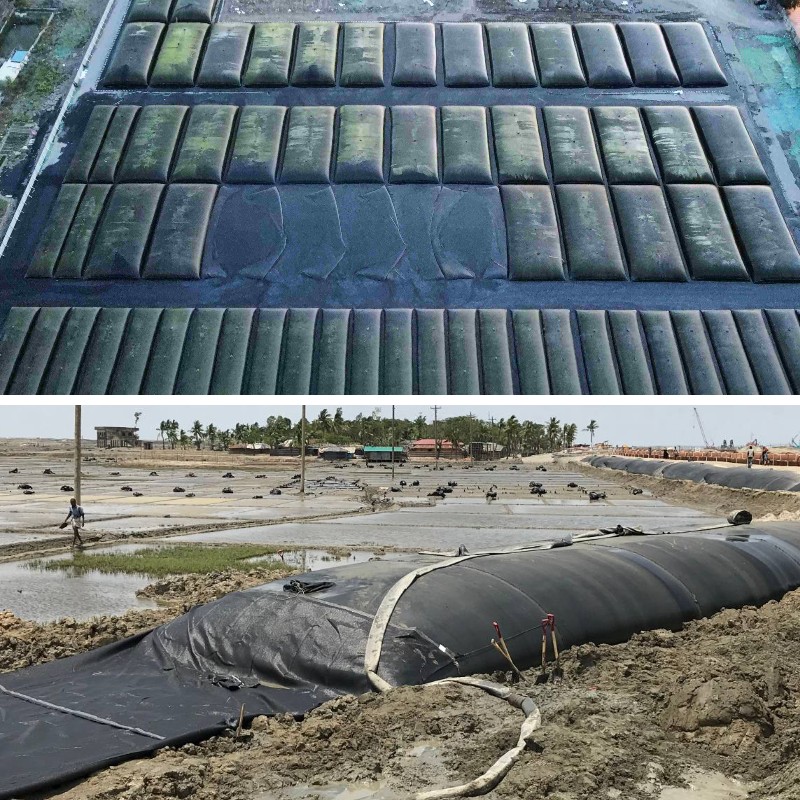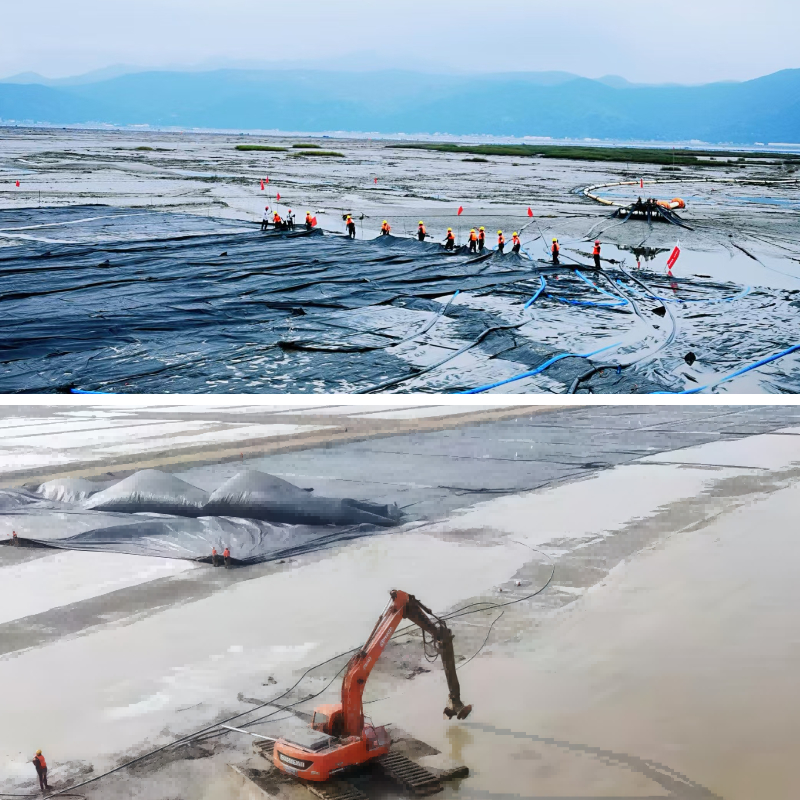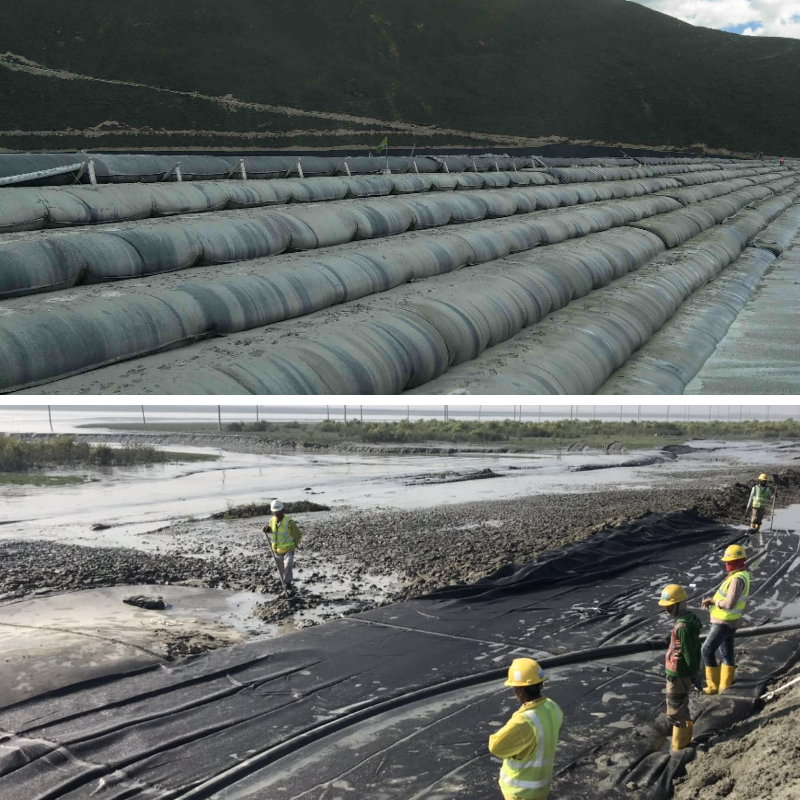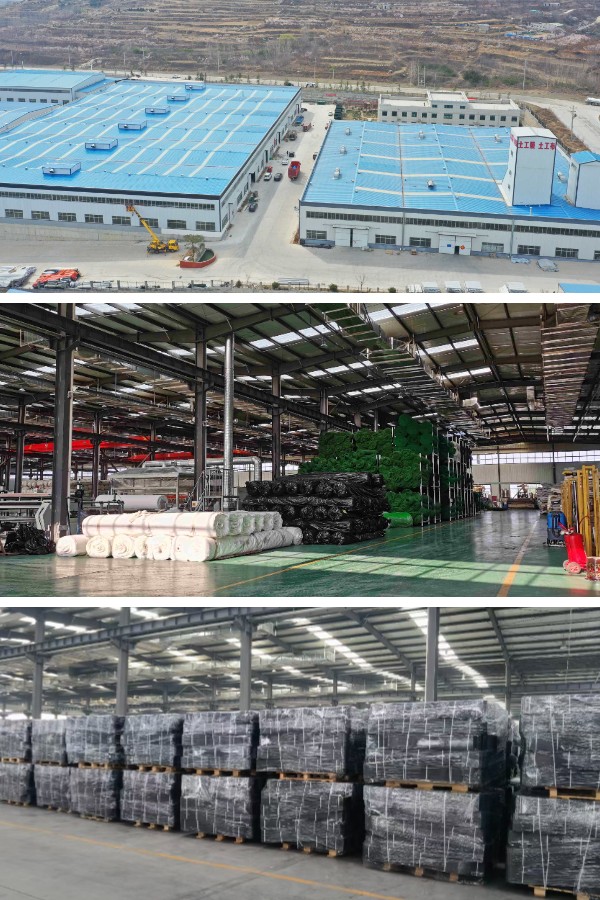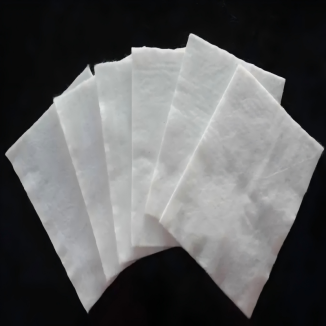Geotextile Tubes in Urban Construction: Supporting Retention Walls & Excavation Projects
Urban development projects—from avenue expansions to high-rise foundations—face special challenges: confined space, tight deadlines, and the want to limit disruption to present infrastructure. Geotextile tubes and geotextile dewatering baggage have emerged as game-changing solutions, in particular for reinforcing retention walls and stabilizing excavation sites. Unlike cumbersome standard substances (e.g., concrete blocks, metal sheets), these geosynthetic merchandise are lightweight, cost-effective, and adaptable, making them perfect for dense city environments. This information breaks down four fundamental methods geotextile tubes beautify retention partitions and excavation projects, plus how geotextile dewatering luggage complement their performance.
1. Geotextile Tubes as Reinforcement for Urban Retention Walls
Retention partitions are crucial in cities to stop soil erosion, guide sloped terrain (e.g., alongside highways, residential hillsides), and maximize usable space. Geotextile tubes act as a flexible, long lasting core for these walls, changing or supplementing usual substances to enhance steadiness and decrease development time.
1.1 Reinforcing Gravity Retention Walls
Gravity partitions be counted on their personal weight to preserve again soil, and geotextile tubes add mass barring the bulk of concrete; crammed with neighborhood soil, sand, or recycled aggregates, the tubes structure a compact, interlocking shape that distributes stress evenly—critical for city websites the place adjoining constructions or roads restriction wall thickness. For low-to-moderate top partitions (1–3 meters, common in residential or park projects), geotextile tubes (1–2 meters in diameter) are stuffed on-site and stacked to shape the wall’s core, disposing of the want to transport heavy concrete blocks and reducing gasoline charges and visitors disruption. Geotextile dewatering baggage play a aiding position here: earlier than filling the tubes, they dispose of extra moisture from the fill material, making sure dryer aggregates pack tighter so the geotextile tube wall stays secure even at some point of heavy rain—a frequent hazard in city areas with bad drainage.
1.2 Stabilizing Cantilever Retention Walls
Cantilever partitions use a concrete base to anchor into the ground, however their skinny stem can crack beneath lateral soil pressure, so geotextile tubes are positioned in the back of the stem to act as a “backfill buffer,” lowering stress on the concrete and extending the wall’s lifespan. In busy city zones (e.g., close to subway traces or underground utilities), this reinforcement is necessary because geotextile tubes take in unexpected soil shifts (e.g., from close by construction) besides transferring immoderate pressure to the cantilever. For taller cantilever partitions (3–5 meters, used in business developments), geotextile tubes are stuffed with high-density aggregates and wrapped in a woven geotextile layer for extra strength; paired with geotextile dewatering luggage to drain groundwater round the wall’s base, this setup prevents hydrostatic strain from lifting the concrete anchor.
2. Geotextile Tubes in Excavation Support: Stability & Safety
Urban excavations (e.g., for basement foundations, utility trenches) regularly take place in tight spaces, with little room for massive guide equipment. Geotextile tubes furnish transient or everlasting stability, stopping cave-ins and defending close by structures—all whilst being effortless to install.
2.1 Temporary Shoring for Deep Excavations
Deep excavations (4+ meters, common for high-rise basements) require shoring to keep returned soil till the shape is built, and geotextile tubes are inflated with water or stuffed with sand to create light-weight shoring partitions that are quicker to installation than metal sheet piles. In downtown areas the place avenue closures are restricted, geotextile tubes can be delivered in flat rolls and established in hours, in contrast to days for typical shoring, and as soon as the excavation is complete, the tubes can be drained, removed, or repurposed for every other site—reducing waste. Geotextile dewatering luggage work alongside the tubes to manipulate groundwater: positioned at the backside of the excavation, they accumulate and filter water, preserving the website online dry and preventing soil liquefaction (a important chance for cave-ins in moist city soils).
2.2 Permanent Slope Stabilization for Excavation Sites
After excavation, uncovered slopes (e.g., round utility corridors or parking garages) want long-term protection, and geotextile tubes are buried alongside the slope’s base or positioned in terraced layers to stop erosion and soil movement. For slopes adjoining to sidewalks or roads, geotextile tubes (filled with native soil and seeded with grass) combo into the city landscape, enhancing aesthetics whilst presenting stability— a key gain over concrete holding blocks, which frequently seem to be industrial. In flood-prone city areas, geotextile dewatering baggage are buried close to the geotextile tube layers to drain extra rainwater, preserving the slope’s soil compact and lowering the chance of mudslides that ought to injury close by infrastructure.
3. Advantages of Geotextile Tubes & Geotextile Dewatering Bags Over Traditional Materials
Urban development needs options that are efficient, cost-effective, and low-impact. Geotextile tubes and geotextile dewatering luggage outperform normal substances (concrete, steel, sandbags) in 4 key areas, making them a pinnacle desire for metropolis projects.
3.1 Cost Savings & Reduced Transportation
Traditional substances require a couple of truckloads to transport—expensive and disruptive in traffic-congested cities—while geotextile tubes are shipped flat, with one truck carrying ample cloth to cowl 10x the place of concrete blocks. For a 50-meter retention wall, the usage of geotextile tubes can reduce transportation fees through 40–60% for the reason that fewer vans are needed, and geotextile dewatering baggage add to these savings by way of removing the want for highly-priced pumping structures to do away with groundwater—they passively filter water, lowering electricity use.
3.2 Flexibility & Adaptability to Urban Spaces
Urban web sites frequently have irregular shapes (e.g., slim plenty between buildings) that are difficult to healthy with inflexible usual materials, however geotextile tubes can be reduce to size, bent round obstacles, or stacked in customized configurations to suit the site’s layout. For example, in a downtown excavation between two historical buildings, geotextile tubes can be fashioned to in shape the slim gap, whereas metal sheets would be too inflexible, and geotextile dewatering baggage can additionally be positioned in tight corners, making sure no location of the web site is left with standing water.
3.3 Environmental Sustainability
Cities are increasingly more prioritizing eco-friendly construction, and geotextile tubes and geotextile dewatering baggage align with these goals: most are made from recycled polyester or polypropylene, and their fill substances (local soil, recycled aggregates) decrease the want for virgin resources. After use, geotextile tubes can be recycled into new geosynthetic products, whilst geotextile dewatering baggage (which filter sediment from water) forestall polluted runoff from coming into city storm drains—helping tasks meet nearby environmental policies and keep away from fines.
3.4 Faster Installation & Minimal Disruption
Urban development tasks face strict cut-off dates to limit disruption to residents, businesses, and traffic, and geotextile tubes and geotextile dewatering luggage can be established with small crews and fundamental tools (e.g., pumps, forklifts), slicing set up time through 30–50% in contrast to standard methods. For a avenue growth project, geotextile tubes can be established overnight, permitting the street to reopen to site visitors the next morning, and geotextile dewatering luggage pace up work in addition by using preserving the web site dry, so crews don’t have to wait for soil to dry out earlier than proceeding.
4. Key Considerations for Installing Geotextile Tubes in Urban Settings
While geotextile tubes and geotextile dewatering luggage provide clear benefits, suited set up is indispensable to their performance—especially in complicated city environments. Here are 4 elements to prioritize to avoid high priced mistakes.
4.1 Site Assessment & Soil Testing
Before putting in geotextile tubes, take a look at the site’s soil kind (e.g., clay, sand, silt) and groundwater levels, as this determines the tube’s size, fill material, and whether or not geotextile dewatering baggage are needed. For clay soils (common in many cities), which maintain water, geotextile dewatering baggage are integral to forestall the fill cloth from turning into too moist and the tubes from shifting; for sandy soils, which drain quickly, pick a heavier fill cloth (e.g., gravel) to preserve the geotextile tubes anchored.
4.2 Choosing the Right Geotextile Material
Not all geotextile tubes are the same—woven geotextiles are more advantageous for high-pressure functions (e.g., deep excavations), whilst non-woven geotextiles are extra bendy for sloped retention walls. In city areas with excessive site visitors or vibration (e.g., close to highways), decide for woven geotextile tubes with a excessive tensile energy (minimum 20 kN/m) to face up to movement, and pair them with non-woven geotextile dewatering baggage for higher water filtration.
4.3 Fill Material Selection & Compaction
The fill cloth for geotextile tubes should be like minded with the project’s needs—use neighborhood substances when viable to decrease costs, however make certain they meet density and particle measurement requirements. For retention walls, fill geotextile tubes with well-compacted soil or sand (density minimal 1.8 g/cm³) to stop settling; for excavation shoring, water-filled tubes are less complicated to regulate however require a steady base—use geotextile dewatering luggage to dry the base first.
4.4 Compliance with Local Building Codes
Urban areas have strict constructing codes for retention partitions and excavations, which includes load-bearing necessities and environmental protections, so make sure your geotextile tube set up meets these requirements to keep away from mission delays or fines. For example, in cities with strict noise regulations, pick out geotextile tubes that can be hooked up with quiet gear (e.g., electric powered pumps as a substitute of diesel); for tasks close to waterways, use geotextile dewatering baggage that filter sediment to meet water excellent standards.
Final Thoughts: Geotextile Tubes as a Urban Construction Essential
In crowded, fast-paced city environments, geotextile tubes and geotextile dewatering baggage clear up the largest building challenges: constrained space, tight deadlines, and environmental pressure. Whether reinforcing a retention wall, stabilizing an excavation, or reducing costs, these merchandise supply dependable overall performance besides the drawbacks of ordinary materials.
By prioritizing website online testing, ideal installation, and compliance with neighborhood codes, you can maximize the advantages of geotextile tubes—ensuring your city task is safe, efficient, and sustainable.
Would you like me to create a project-specific geotextile tube fabric & set up guide? It will tailor guidelines for your city challenge kind (e.g., residential retention wall, downtown excavation) and encompass a quick-reference part for geotextile dewatering luggage usage.
Contact Us
Company Name: Shandong Chuangwei New Materials Co., LTD
Contact Person :Jaden Sylvan
Contact Number :+86 19305485668
WhatsApp:+86 19305485668
Enterprise Email: cggeosynthetics@gmail.com
Enterprise Address: Entrepreneurship Park, Dayue District, Tai 'an City,
Shandong Province


